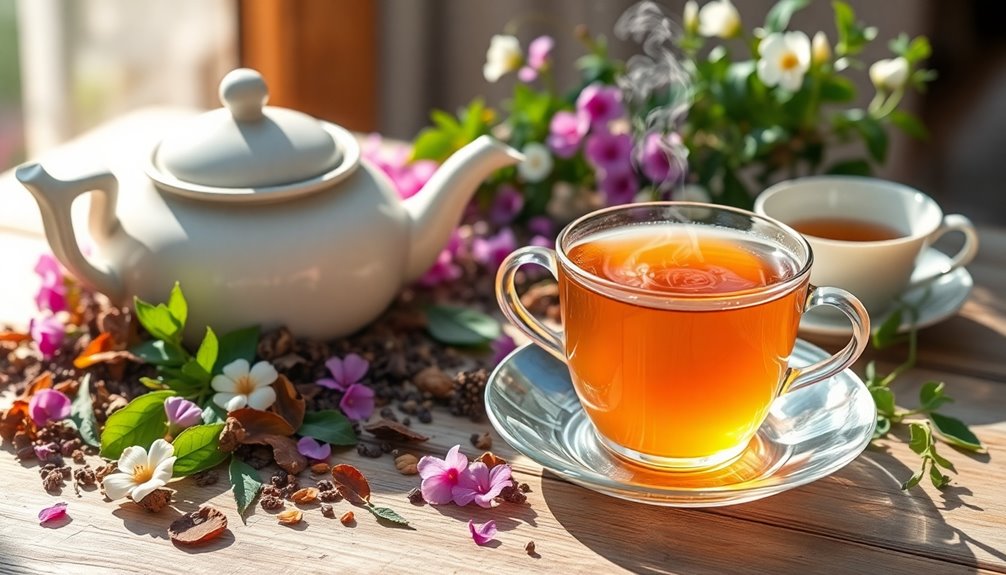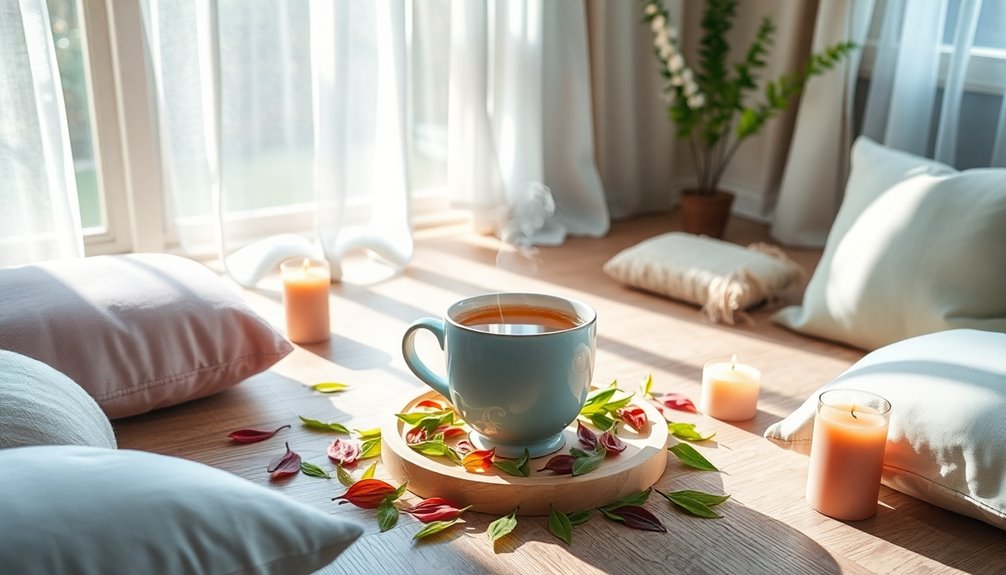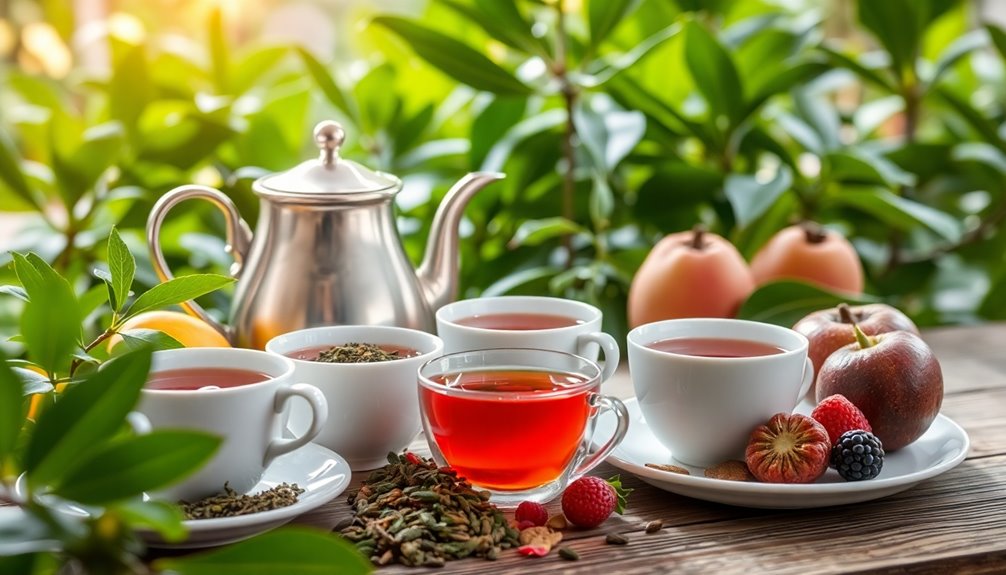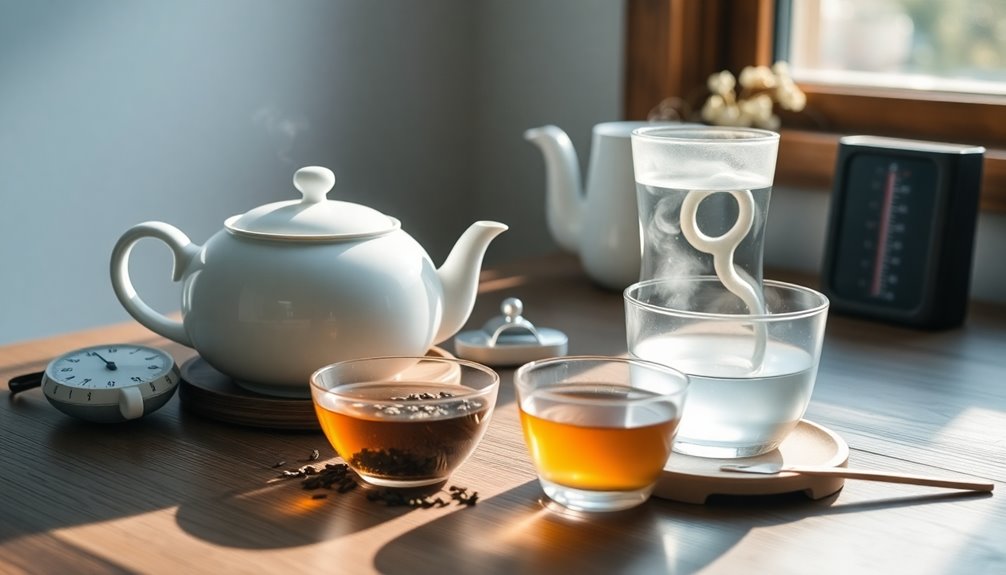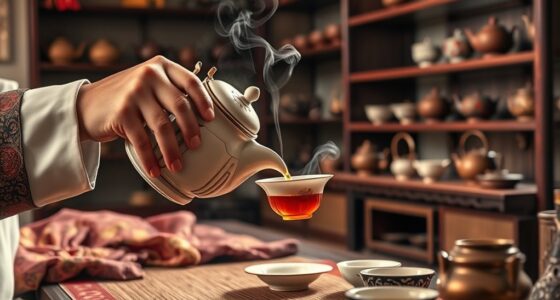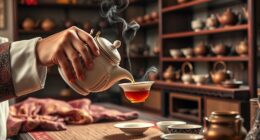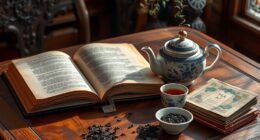To elevate your tea game, switch to loose leaf tea! It's a total game-changer that gives you control over flavor and aroma. You'll enjoy richer tastes compared to boring old tea bags, plus you can experiment with blending different kinds for unique flavors. Don't forget the steeping time and temperature, as each type of tea has its sweet spot, like green tea at 75-85°C for 2-3 minutes. With loose leaf, your tea journey becomes a fun adventure! If you stick around, you'll uncover even more tips to brew the perfect cup that'll impress your friends.
Key Takeaways
- Use loose leaf tea instead of tea bags for superior flavor and quality, enhancing your overall tea experience.
- Adjust brewing temperature according to tea type for optimal flavor extraction; for example, use 85-95°C for black tea.
- Experiment with steeping times to find your perfect brew; loose leaf typically requires around 5 minutes for peak flavor.
- Invest in a reusable tea infuser or classic teapot to enhance your brewing process and enjoy the ritual of tea-making.
- Blend different loose leaf teas to create unique flavor combinations tailored to your taste preferences.
Introduction
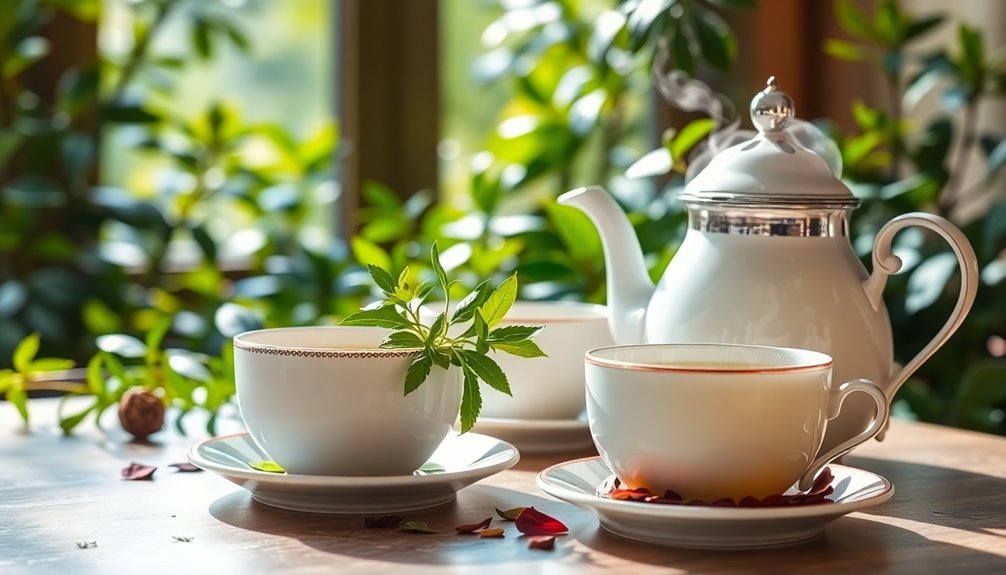
When it comes to enjoying a perfect cup of tea, elevating your tea game is essential. You might think tea is just tea, but using loose leaf tea can make a big difference in taste! Unlike tea bags, loose leaf tea gives you better flavor and lets you control how you brew it.
To start, pay attention to water temperature. Did you know that green teas like a cooler bath, around 75-85°C, while black teas enjoy a warmer soak at 85-95°C?
Next up is steeping time. For the best flavor, use about a heaped teaspoon of loose leaf tea and let it steep for around five minutes.
But watch out! If you leave the leaves in too long, your tea can turn bitter, and nobody wants that. A handy tea infuser can make this process easier and mess-free.
Tea Brewing Temperature Importance
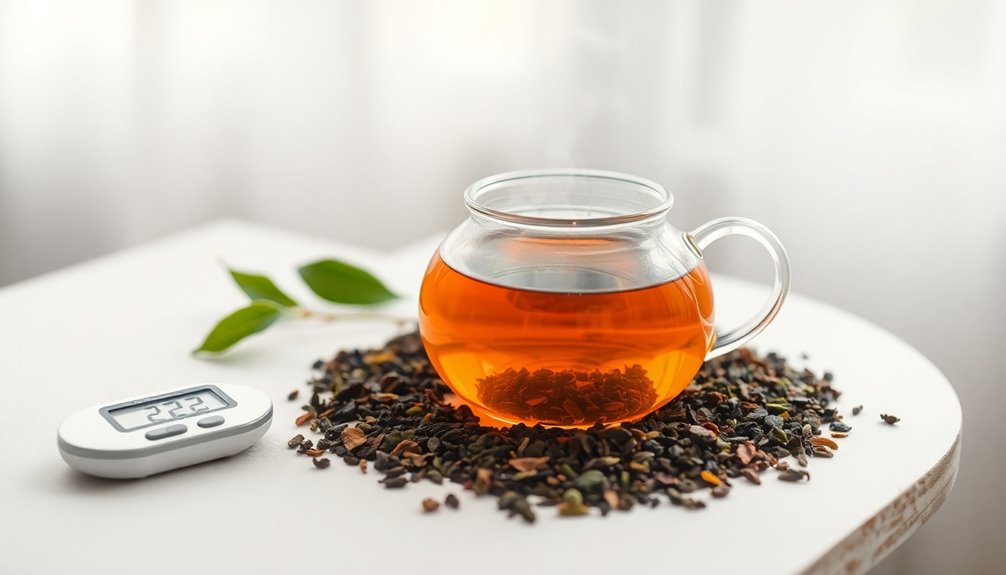
Understanding the importance of brewing temperature can transform your tea experience. The right tea brewing temperature helps unlock the best flavors from your tea leaves.
For example, delicate teas like green tea and white tea are best brewed at lower temperatures, around 75-85°C, to keep them sweet and avoid bitterness. On the other hand, black tea loves the heat and thrives at 85-95°C, while herbal teas are happy at boiling water, which is 100°C.
If you pour boiling water straight onto your green tea, you might end up with a cup that's more astringent than delightful! To get it just right, let boiling water cool for a minute before steeping.
This little trick can enhance the overall taste of your tea, making it so much more enjoyable.
Optimal Steeping Time Matters
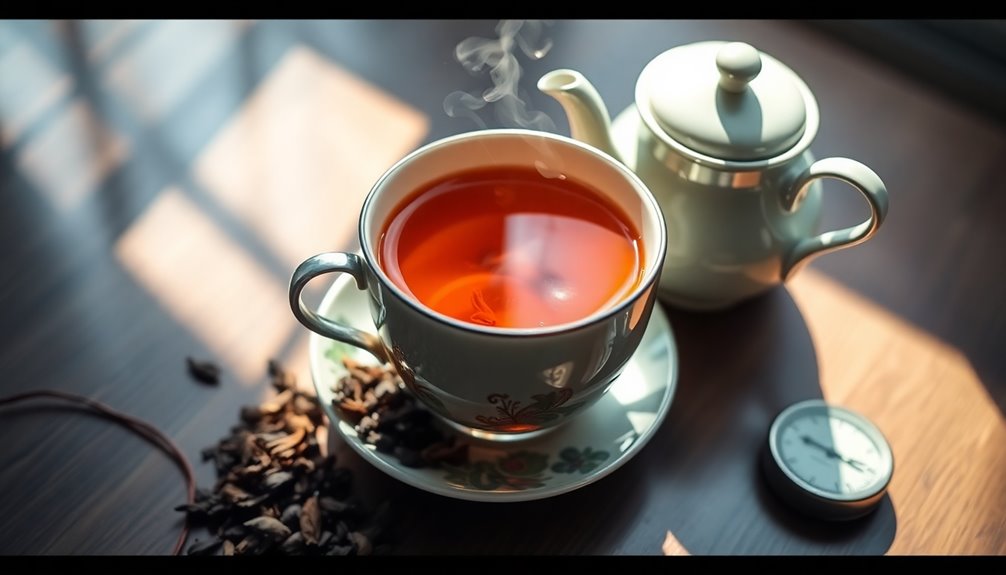
Your tea's flavor can significantly change based on how long you steep it. Finding the optimal steeping time is super important! For tea bags, aim for about three minutes. This helps extract the best flavors without turning it bitter.
Loose-leaf tea, on the other hand, usually needs around five minutes to reach that delicious peak. Loose leaf tea often provides superior flavor compared to bagged tea, making it a worthwhile choice. Additionally, the calming properties of lavender oil can enhance your tea-drinking experience, providing a sense of relaxation. Herbal teas, which include infusions made from herbs, flowers, fruits, or spices, can offer a unique range of flavors and health benefits.
When it comes to green tea, you'll want to steep it for just 2 to 3 minutes. This way, you keep its natural sweetness while avoiding any bitterness.
Black tea loves a little more time, so steep it for 3 to 5 minutes. This allows those rich flavors to shine, while still keeping it smooth and enjoyable.
But beware of over-steeping! If you leave your tea too long, it can become astringent, making your sip less pleasant.
Don't worry, though! Experimenting with different steeping times is part of the fun. You can discover what you like best, and that's where the magic happens. Additionally, using fresh, filtered water can significantly enhance the taste of your tea.
Tea Leaf Quality Impacts Flavor
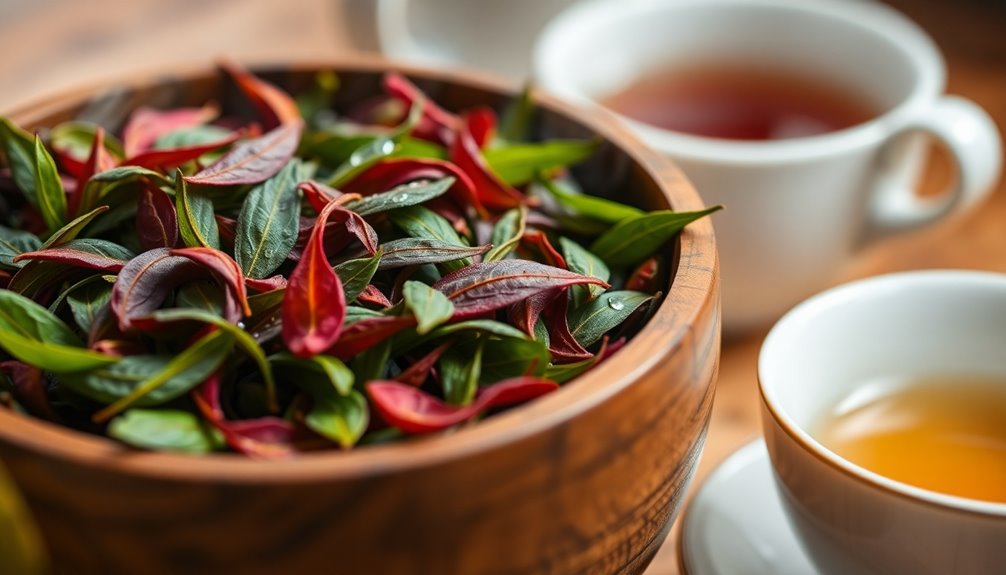
The quality of your tea leaves plays a direct role in the flavor you experience with each sip. If you want a truly delightful tea experience, consider switching to loose leaf tea.
Unlike tea bags that often contain dust or tiny bits, high-quality loose leaf tea offers a whole new world of taste! When you brew tea from these leaves, you'll notice a richer aroma and a more complex flavor profile that dances on your tongue.
To pick the best tea, take a moment to inspect the leaves. Look at their color, size, and aroma before you brew tea. Additionally, choosing herbal teas known for their unique benefits can further enhance your tea experience.
You'll discover that fresh, high-quality tea leaves not only taste better, but they also keep all those wonderful natural oils and health benefits intact. Additionally, oolong tea, known for its unique flavor profile, stands out as an excellent choice among loose leaf options.
Plus, blending different loose leaf teas can lead to exciting new flavors that you just can't find in standard tea bags.
Brewing Temperature Disagreements
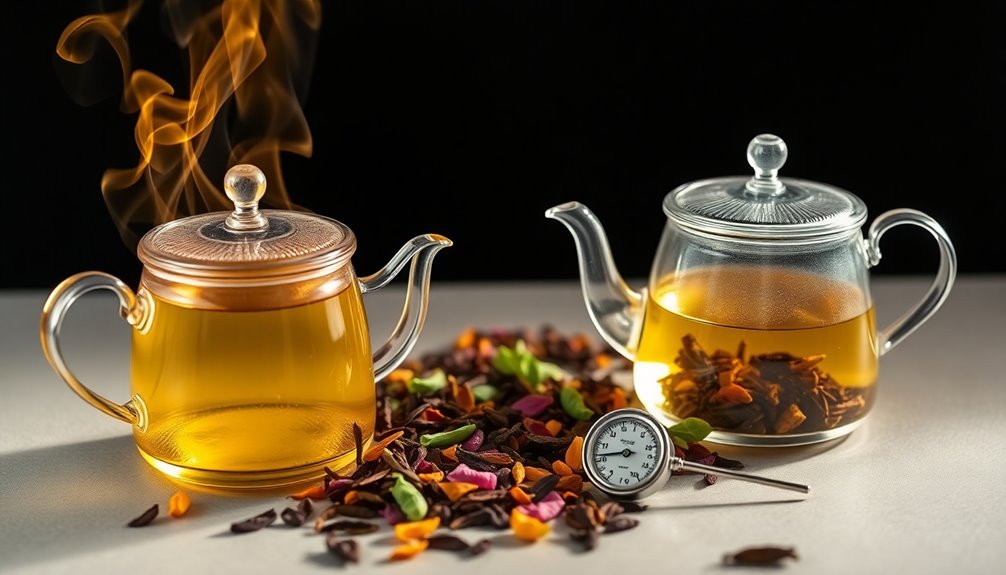
Brewing temperature can make or break your tea experience, and many tea enthusiasts often overlook its importance. Different types of tea have their own special temperature ranges, which are vital to enjoying their full taste.
For example, green tea is best brewed at 75–85°C (167–185°F) to avoid bitterness, while black tea needs hotter water, around 95–100°C (203–212°F), for that robust flavor.
But be careful! Overheating delicate teas like white and oolong can ruin the fun. White tea loves a cozy 65–75°C (149–167°F), and oolong prefers 80–90°C (176–194°F) to show off its unique flavor profile.
Many folks mistakenly use boiling water for all their teas, but that can lead to a disappointing cup. If you let boiled water cool for a minute, you'll hit the perfect temperature for sensitive brews.
Practical Applications
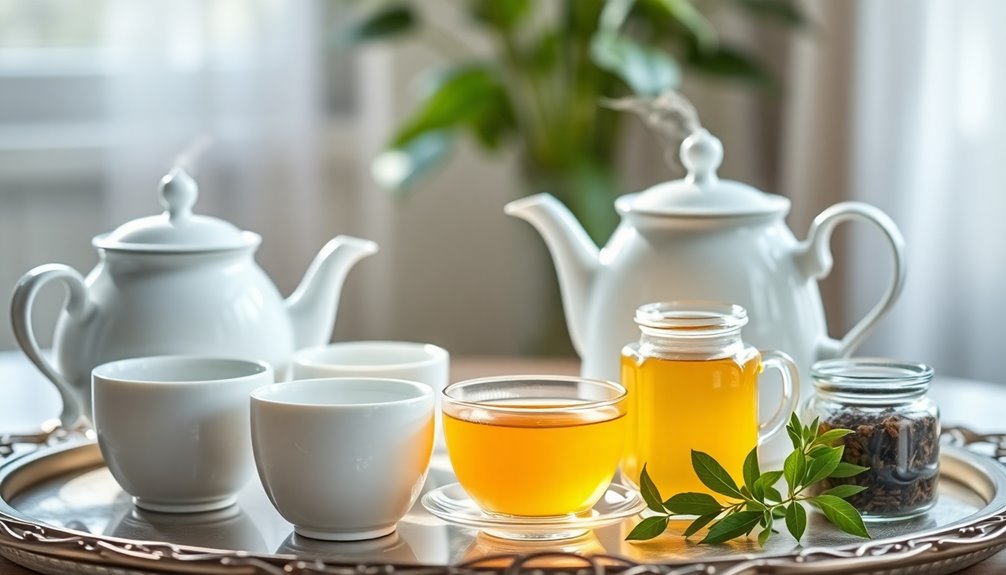
Often, tea lovers seek practical ways to enhance their brewing experience and truly savor the flavors of their favorite varieties. One great method is using a reusable tea infuser strainer basket. This eco-friendly tool lets you brew loose leaf tea without creating waste from single-use tea bags, ensuring your cup of tea tastes fresher and cleaner.
If you want to get fancy, try a French press! You can use it to brew both coffee and loose leaf tea, allowing you to customize the steeping time. This method really helps flavors shine, especially with types of tea like Hojicha Green Tea. Brewing time significantly affects caffeine extraction, enhancing the overall tea experience.
For a delightful experience, brew your tea in a classic teapot. This creates a lovely ritual, letting the rich flavors and aromas develop, perfect for varieties like Genmaicha Green Tea.
If you're in a hurry, the straight brewing method is super easy; just steep tea leaves directly in a cup of hot water, which is great for quick brews like Peppermint Leaf Tea.
Frequently Asked Questions
How to Elevate a Cup of Tea?
To elevate your cup of tea, use loose leaf for better flavor, brew at the right temperature, steep for the correct time, and experiment with fresh herbs or spices for unique, delightful profiles.
What Is the Tea Technique?
The tea technique involves using the right water temperature and steeping time for each type. Opt for loose leaf, remove leaves promptly, and experiment with different brewing methods to enhance flavor and avoid bitterness.
What Does It Mean to Steep a Tea Bag?
Steeping a tea bag means submerging it in hot water, allowing the flavors and beneficial compounds to infuse into the liquid. You should monitor the time to avoid bitterness and enhance your tea experience.
Should I Drink Tea Before a Game?
Yes, drinking tea before a game can boost your focus and energy. Its antioxidants help with recovery, and certain herbal varieties aid digestion. Just remember to balance it with water to stay hydrated.
Conclusion
Now that you know the secrets to brewing a perfect cup of tea, it's time to put your skills to the test! Remember, the right temperature, steeping time, and high-quality leaves make all the difference. So, grab your favorite tea, and have fun experimenting! You'll impress your friends and family with your delicious creations. Who knew a simple cup of tea could bring so much joy? Happy brewing, and enjoy every sip of your tasty masterpiece!

